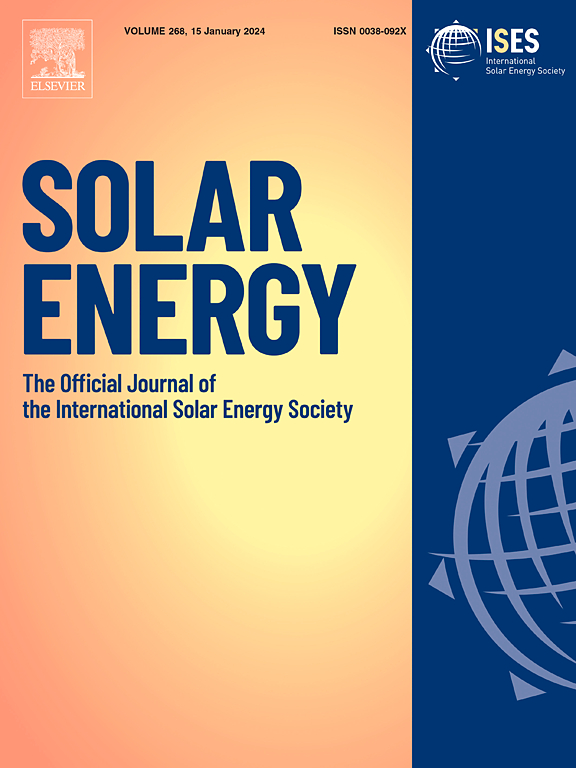Optical and structural properties of TaC thin films: Towards design of an efficient high temperature solar absorber coating
IF 6
2区 工程技术
Q2 ENERGY & FUELS
引用次数: 0
Abstract
Tantalum and Tantalum Carbide (TaC) thin films are fabricated using pulsed DC magnetron sputtering from a Ta target in an argon-acetylene (C2H2) environment at room temperature. Precise control of the TaCx film composition was achieved, with minimal impact on the films’ structure, morphology, and optical properties observed when varying C2H2 gas concentrations, ensuring high reproducibility rate. Ellipsometry analysis determined the complex refractive index of the TaCx films, enabling accurate reproduction of reflectivity spectra in both visible and infrared regions. As the knowledge of the refractive index is crucial for simulating optical structures, an optimised selective solar absorber (SSA) for use in concentrating solar-thermal power (CSP) systems was designed. It comprises TaC and SiN layers on a tungsten substrate; hence, it is capable of withstanding high temperatures. It has a solar absorptance of 0.96 and a thermal efficiency higher than 0.9 at 900 °C and 0.85 at 1100 °C for incident angles up to 50 °C for a concentration factor of 1000. Its large acceptance angle offers significant potential for energy production through heliostats where the incident angle may vary.
TaC薄膜的光学和结构特性:一种高效高温太阳能吸收涂层的设计
在氩气-乙炔(C2H2)环境下,采用脉冲直流磁控溅射法制备钽和碳化钽(TaC)薄膜。在不同C2H2气体浓度下,TaCx薄膜组成的精确控制对薄膜结构、形貌和光学性质的影响最小,确保了高重现率。椭偏分析确定了TaCx薄膜的复折射率,从而精确再现了可见光和红外区的反射率光谱。由于折射率的知识对于模拟光学结构至关重要,设计了一种用于聚光太阳能热发电系统的优化选择性太阳能吸收器。它包括钨基板上的TaC和SiN层;因此,它能承受高温。它的太阳吸收率为0.96,在900°C时的热效率高于0.9,在1100°C时的热效率高于0.85,入射角高达50°C,浓度系数为1000。它的大接收角提供了巨大的潜力,能源生产通过定日镜入射角可能会变化。
本文章由计算机程序翻译,如有差异,请以英文原文为准。
求助全文
约1分钟内获得全文
求助全文
来源期刊

Solar Energy
工程技术-能源与燃料
CiteScore
13.90
自引率
9.00%
发文量
0
审稿时长
47 days
期刊介绍:
Solar Energy welcomes manuscripts presenting information not previously published in journals on any aspect of solar energy research, development, application, measurement or policy. The term "solar energy" in this context includes the indirect uses such as wind energy and biomass
 求助内容:
求助内容: 应助结果提醒方式:
应助结果提醒方式:


